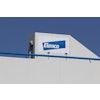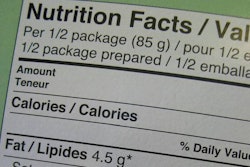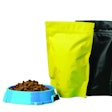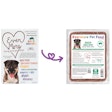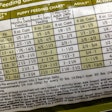
Human food trends continue to heavily influence pet food trends, and not just when it comes to the food itself—package labeling has become an increasingly important issue to pet-owning consumers as they pay attention to their own food and, by extension, begin to take a closer look at what their pets consume.
According to Mintel’s report, Global Packaging Trends: A fast-forward look at how the next generation of packaging is engaging consumers in 2016, human food consumers are demanding more information about what they are buying but seeking less on-pack clutter that confuses their purchasing decisions. “This is perhaps nowhere more apparent than in food, where 58% of UK consumers check ingredient information on product packaging and 76% are concerned about the use of artificial preservatives,” says the report. “Clear and concise information about ingredients, functional product attributes, or even convenience and safety must be communicated with total transparency—a key responsibility brands and consumers are placing squarely on packaging. Looking ahead, the concepts of clean labeling and clear on-pack communication are set to converge.”
Similarly, at IFT 2015, Innova Market Insights highlighted several top global human food labeling trends in 2015, including transparency, recognizable ingredients, and claims such as “no additives/preservatives,” “GMO-free” and “organic.” According to Innova, 91% of US consumers agree that food and beverage options having recognizable ingredients can make products seem healthier. GMO-free positioning could be found globally on 2,353 products in 2010—a number which increased by 30% in 2011, 37% in 2012, 35% in 2013 and 40% in 2014. Also in 2014, one in 10 US products came with an “organic” claim.
How do these trends translate to pet food? Well, in September 2015, Just Right by Purina conducted a survey to find out what concerns dog owners had about their pets’ health and wellness. Nearly half of dog owners agreed that choosing the right food for their dog was the most difficult part of pet ownership. Almost one in four surveyed said they felt overwhelmed by choices, and one in four said they spent more than 10 minutes in the dog food aisle comparing and choosing their pet’s food.
At the National Grain and Feed Association (NGFA) and Pet Food Institute (PFI) joint conference at the end of September 2015, Jim Barritt, government and regulatory affairs manager for Mars Petcare US, presented a summary of results from 2013 consumer discussion groups conducted by Mars that focused on pet food labeling. These results, too, pointed to pet food labels being overwhelming to consumers. If they looked at anything, consumers said, it was the first two or three ingredients, the percentage of protein or fat, or serving sizes if the brand was one they were unfamiliar with. They found ingredient lists too long, cluttered-looking and containing too many unfamiliar terms, and even self-professed “label readers” admitted they only looked at the ingredients list for “real” meat or protein among the first few items listed, when they had to take an allergy into consideration, or when a veterinarian recommended avoiding a particular ingredient.
What’s more, according to the Mars groups, consumers said they didn’t understand how to read the Guaranteed Analysis label on their pets’ food, never read the nutritional statements because they were often too long and/or difficult to read (in too small a font), and rarely took into account the feeding guide provided on the bags or cans.
The industry is taking these concerns into significant consideration, recognizing the need to stay on top of labeling trends as part of making products both visible on the shelves and successful in attracting educated consumers. Barritt presented several labeling recommendations during his presentation:
- Improve back labeling by simplifying language, streamlining information and connecting related pieces.
- Create an ingredient list that categorizes ingredients, clarifies what ingredients are included, states the benefits of key ingredients and is connected to other areas of the package label.
- Update the Guaranteed Analysis label to a more “Nutrition Facts”-type label, for simplicity, clarity and familiarity to consumers.
- Change nutritional statements to a badge or seal that will better communicate nutritional statements/standards.
- Transform the feeding guide to a chart that simplifies data.
As a result of the Mars data, in 2015 PFI convened a task force to explore the concept of improving pet food labels. Its work to date includes a pet food Nutrition Facts chart—still very much a work in progress, according to Barritt—with major ingredients at the top and vitamins and minerals broken out below. The aim is to eventually take it to the US Food and Drug Administration (FDA).
According to David A. Dzanis, DVM, PhD, DACVN, FDA is easing up on its oversight of “GMO-free” label claims in human food, something that could affect pet food since state feed control officials have often relied on FDA guidance in their reviews of pet food labels. This new direction could prove a boon to both pet owners who care whether their pets’ food contains genetically modified ingredients and pet food and treat manufacturers who want to emphasize a lack of such ingredients in their products.
And on the technology side, a recently announced initiative called SmartLabel may help pet owners access detailed information about thousands of pet products. The technology allows consumers to get additional details about a product by scanning a barcode or searching online to find information about ingredients, and is currently being used by some human food manufacturers as well as some pet food manufacturers.
Between human food labeling trends and the connected pet food labeling trends, it behooves the pet food industry to remain open to change when it comes to labeling their products. Pet food packaging has always been a significant marketing tool for pet food; now, it’s time to make the most of the information presented on that packaging.
More on pet food labeling and packaging



